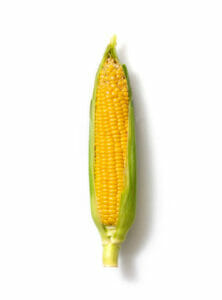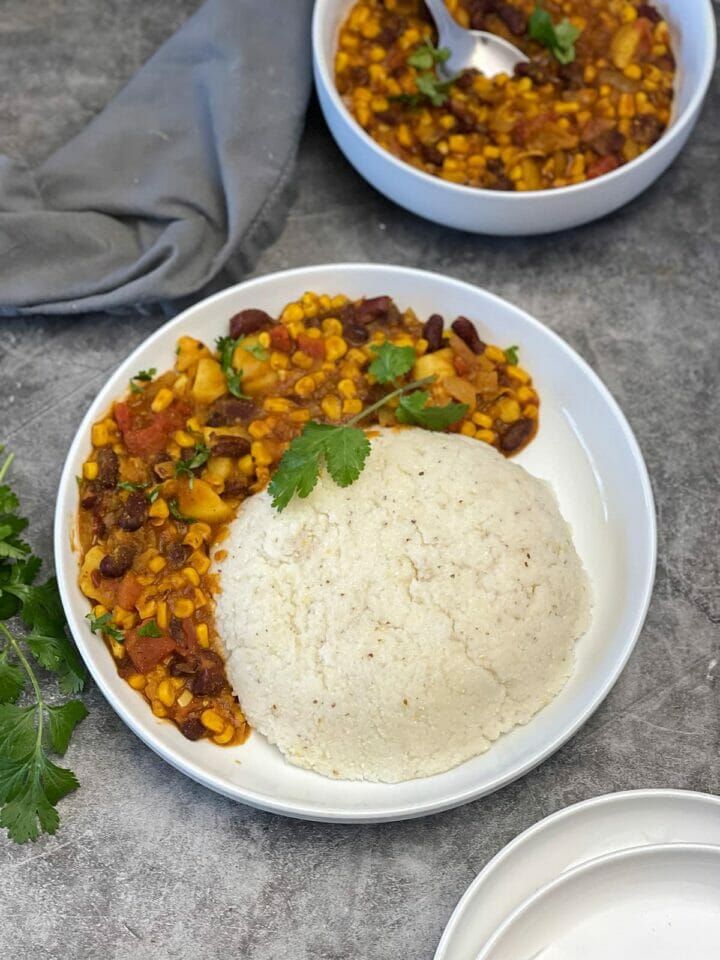If you are here to learn about the ugali recipe, then you have eaten ugali but do not know how to cook it. Or, maybe you have Kenyan guests coming over and want to impress them. Either way, this article is for you. Happy reading!
Ugali is a major dish served in Kenya and other East African countries. It’s an affordable meal to prepare, and the ugali recipes are easy to gather. This is why many Kenyans eat it daily.
In this article, we’ll discuss the ugali recipe, and you’ll learn how to prepare a delicious dish of Ugali.
What is Ugali?
Ugali is also known as ugali in the local Luo language, which means “to eat a lot.” It is a delicious staple meal eaten in most parts of East Africa. Ugali is a traditional dish served with meat and vegetables.
However, you decide on the protein of choice or vegetables. If you want to make it vegetarian-friendly, add some chopped onions and serve it with tomatoes and green beans for extra flavour. This ugali recipe can be customized to your taste.
However, it can also be served plain or eaten as a dessert. Just make sure to sprinkle it with sugar or salt before eating.
Maize flour is the major ingredient in this ugali recipe. The powdered maize is evenly mixed with water and moulded into a dough. You can knead the dough into dough balls before being boiled in water until they become soft enough to eat.
Nutritional benefits of Maize

Before we talk about the ugali recipe, let’s look at the nutritional benefits of maize; since there will be no Ugali without maize. Besides Ugali, maize is a staple diet for many Kenyans.
It Has a High Fiber Content
Fibre helps with bowel movements and digestion. It softens the stool and prevents constipation. Fibre also leaves you feeling full longer, so it is ideal for people to watch their weight.
Studies suggest that high dietary fibre is associated with a reduced risk of cancer and helps you live longer. Generally, nutritional fibres promote healthy living.
It has a high protein content
The body uses protein to repair torn muscles and maintain tissues. Protein also plays an active role in creating enzymes, hormones, and even bones.
Interestingly, protein can provide the body with energy in the absence of fat and carbohydrate. In addition, studies show that increased dietary protein is associated with immune boosts.
Protein also helps the body burn down fat by increasing the rate of metabolism. This makes maize and other protein-rich meals ideal for weight loss.
Contains Iron
Iron is an essential mineral that the body needs for blood formation. A person will suffer from iron-deficiency anaemia if the iron stores are low. In addition, the body needs iron for the formation of haemoglobin.
Also, the body needs haemoglobin to transport oxygen from the lungs to its different parts. Iron prevents hypoxia. A limited amount of haemoglobin (red blood cells) in the bloodstream causes hypoxia.
Besides, iron assists in the formation of myoglobin. It is myoglobin that provides oxygen to muscles and tissues of the body.
High Zinc Content
The body doesn’t need a lot of zinc to function appropriately. Zinc is used in the creation of DNA and the growth of cells. It also assists the body’s immune system.
High Calcium Content
Calcium is essential for developing and maintaining healthy bones, tissues, and cells. It is also helpful in the regulation of heart rhythm.
Contains Vitamin C
Vitamin C, also known as ascorbic acid, is an essential vitamin the body needs. Unfortunately, the body does not create the vitamin, so you must depend on dietary consumption.
The vitamin assists the body in forming blood vessels, muscles, collagen, and cartilage. Vitamin C also encourages wound healing.
Interestingly, Vitamin C is an antioxidant that helps to protect the body from oxidative reactions caused by free radicals.
Contains Vitamin B
Vitamin B2, also known as riboflavin, is another essential vitamin the body needs but cannot produce. It assists in the breakdown of large molecules, such as; fat, carbohydrate, and protein molecules.
Interestingly, vitamin B also helps regulate the body’s energy supply. It is the vitamins that convert carbohydrates into adenosine triphosphate (ATP). ATP is the energy-carrying molecule that supplies energy to the body.
Low Sodium Content
Studies show that the human body needs 500mg of sodium daily. Usually, salt is the major source of dietary sodium for most people. However, excess sodium intake can cause some adverse effects.
Excess sodium in meals can cause high blood pressure, heart-related diseases, and stroke. Sodium also leads to calcium loss from the bone, which can lead to weak bones.
High Carbohydrate Content
Carbohydrate is the body’s primary source of energy. In general, carbohydrates keep you active. It provides the glucose that keeps biological functions running, such as;
- Fueling the brain.
- In maintaining the pumping of the heart.
- Encouraging muscle contraction and relaxation.
- Promotes bowel movement and digestion.
High Potassium Content
Potassium is an essential mineral that functions as an electrolyte in the body. All biological tissues and nerves need potassium. Potassium has electrical charges that activate biological tissues and nerves.
Unfortunately, the body doesn’t synthesize potassium. Instead, we depend on our dietary supply of the mineral. Besides activating tissues and nerves, potassium controls fluid in our cells.
Ugali Recipe
Ugali is made from flour gotten from dried maize grains. However, getting the ingredients for the ugali recipe, especially maize flour outside Africa can be challenging. Hopefully, you may get maize flour in a nearby African market.
Although you can use any type of flour, we don’t recommend it. Using another kind of flour may not taste as good as maize flour. Ugali tastes best when cooked on a griddle or frying pan over high heat (medium-high).
This ugali recipe also requires water and salt for the dough to stick together when cooked; if you don’t have access to fresh water or sea salt (two essential ingredients), then substitute with what’s available.
Ingredients
Maize flour or corn meal
Maize flour or corn meal typically serves as the bases in every ugali recipe. If you don’t have maize or corn flour, feel free to improvise with another type of flour.
Boiled water
Never add too much water at once, or you may have an overflow. You should use about three cups of water for every cup of maize flour. Although, the thickness of your dough determines how much water you will use.
However, if you’re using corn starch instead of maize flour in your ugali recipe, add water only after boiling has begun. Otherwise, the water will get absorbed by your dough and make it too thick and sticky rather than easy to roll out into flat disks like those made with real maize meal would be.
Salt
Salt is a preservative and flavour enhancer. It contains sodium chloride, which keeps the food from spoiling. Salt also increases the shelf life of foods by preventing oxidation reactions that would otherwise break down vitamins, proteins, and fats in your meal.
Preparation
- Simmer water to boiling point in a large pot.
- Add a pinch of salt to the boiling water and stir until the salt crystals dissolve.
- Add the maize flour, 1/4 cup at a time, stirring in between each addition. The mixture should be smooth and thick and reach the desired consistency.
- Keep adding flour until it is thick right for your taste.
- Add maize flour and mix with a spatula until it forms a paste that is not too dry or too wet.
- You also add extra water if you prefer your ugali smoother than expected.
- Add salt to taste.
- Reduce the heat and stir for about an hour until it reaches desired consistency.
Your dish is ready.
Serve with salad, vegetable, stew, or any topping of choice.
Note: Before mixing everything, you can add other ingredients, like butter or eggs. However, this is not compulsory, so don’t feel pressured into adding anything extra. You will still enjoy your meal.
How to Tell if Your Ugali is Done?
If you can break a small piece of the dough and if breaks into granules, then your ugali is ready.
Enjoy your ugali!
Conclusion
Ugali is a popular staple meal in Kenya and other East African countries. Besides being delicious, it is also nutritious with many health benefits. Maize or corn flour is the primary ingredient used to prepare the dish.
Thankfully, Ugali is not a meal that only non-vegetarians can eat. You can customize this ugali recipe to make it a vegan meal by changing the toppings used.
Also, the dish can be eaten with different toppings, so you do not need to bother about getting bored by always eating the same food. If you don’t have access to fresh vegetables, then you can eat your dish of Ugali with stew and meat.
Ugali is an affordable dish that many Kenyan households eat daily. However, it can be made in large quantities and stored for future consumption. Also, gathering the ugali recipes is not difficult within Africa, but getting corn flour outside the shores of Africa can be challenging.



